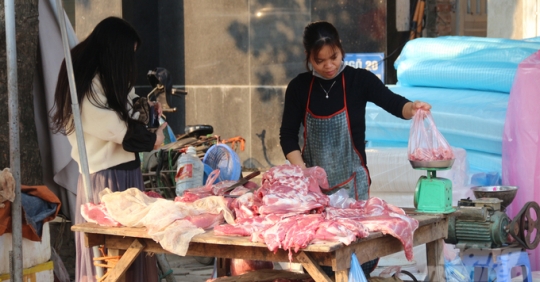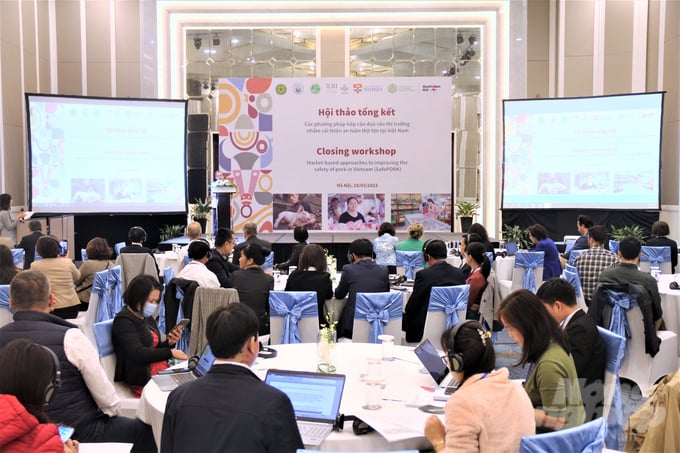
Workshop summarizing the project “Market-Based Approaches to Improve Pork Safety in Vietnam” (SafePORK) on March 28th. Picture: Pham Hieu.
Salmonella infection rate reduced from 52% to 24% thanks to SafePORK project
At the final workshop of the project “Market-based Approaches to Improve Pork Safety in Vietnam” (SafePORK) on March 28, Dr. Pham Duc Phuc, a member of the University of Public Health Project, said pork is the most consumed meat in Vietnam and the salmonella infection rate is very high. On average, 1-2 people are at risk of contracting salmonella from pork every year.
Accordingly, Salmonella is a common foodborne disease. Most cases are mild, but the disease can become serious and affect anyone. Those most at risk are children under the age of 5, the elderly aged 65 and over, pregnant women and people with health problems.
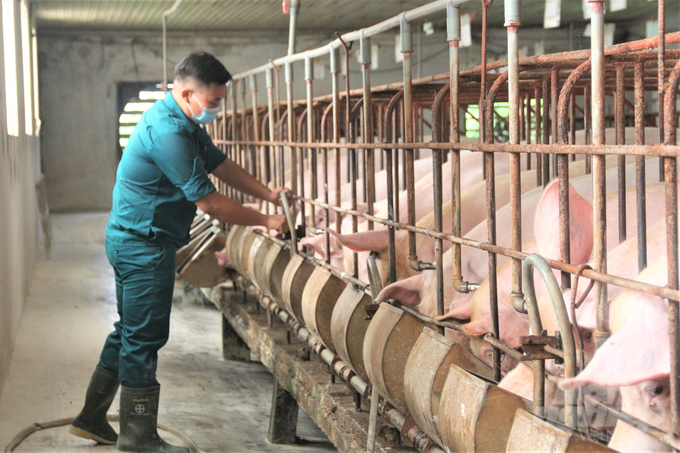
Pork is the most consumed meat in Vietnam. Picture: Pham Hieu.
DR. Fred Unger, Regional Representative of the International Livestock Research Institute (ILRI) in East and Southeast Asia, said the SafePORK project interventions aim to reduce microbial contamination of pork in the traditional retail market.
The results showed that after the intervention, the rate of Salmonella infection in retail pork decreased from 52% to 24%.
“Aiming to reduce the burden of foodborne illnesses in informal, emerging and niche markets, the SafePORK project designed and evaluated simple interventions to improve food safety while improving the livelihoods of stakeholders in the smallholder pork chain in Vietnam protect,” said Dr. Fred Unger shared.
In addition, the ILRI representative added, the SafePORK project has also implemented a series of simple interventions and capacity-building support to help reduce the key pathogen, Salmonella, down the chain.
Accordingly, the project’s research team conducted a survey among participants in the small pork value chain. From there it was found that the main causes of unsafe pork were poor sanitation; improper preservation and processing, long meat transport time, epidemics, pork of unknown origin, inferior input.
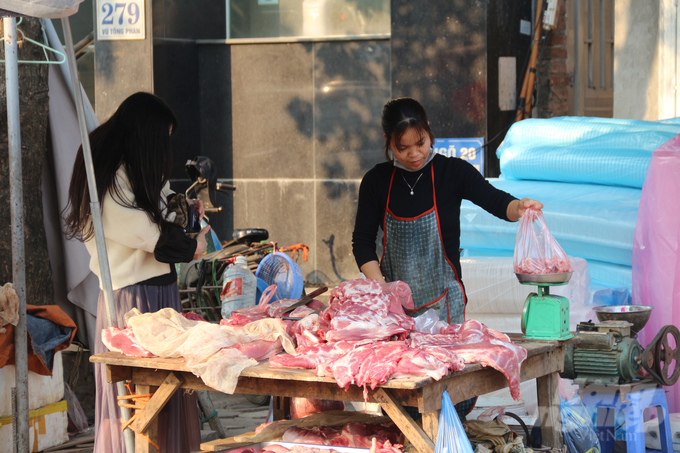
The SafePORK project interventions aim to reduce microbial contamination of pork in the traditional retail market. Picture: Pham Hieu.
At the workshop, the team presented an intervention package to improve hygiene practices, which included separating raw pork, cooked pork and offal and regularly cleaning vendor surfaces, equipment and hands.
An intervention package has also been introduced in the slaughterhouses, which includes the use of stainless steel plates to prevent carcasses from touching the floor, frequent hand and surface washing, and better separation of clean and dirty to reduce carcass contamination.
The workshop also discussed lessons learned and future directions, recommendations, lessons learned and opportunities for scaling and the potential for further research in the future.
Consumers are willing to pay 20% more for safer pork
Improving pork quality and safety is one aspect of modernizing the pork value chain. Meanwhile, concerns about contaminated pork are having a negative impact on consumers’ willingness to pay for conventional pork.
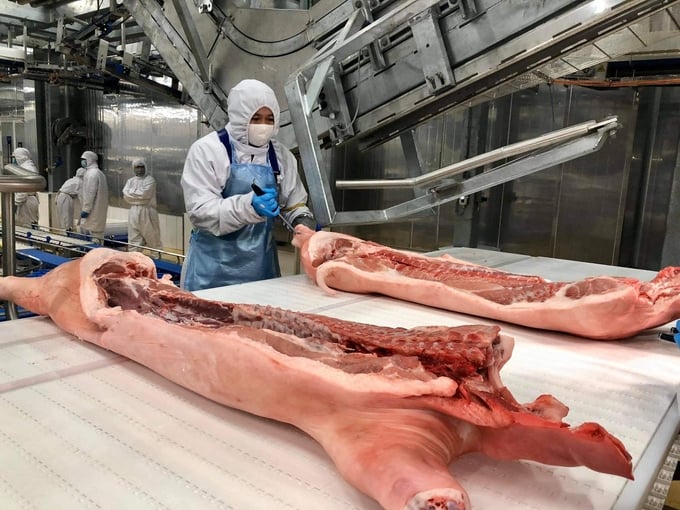
Consumers are willing to pay 20% more for safer pork than is available on the market. Picture: Pham Hieu.
The results of studies by the SafePORK project show that consumers are willing to pay 20% more for safer pork than products currently on the market. In particular, consumers’ confidence in the effectiveness of the interventions and the quality of the pork at the project’s intervention counters has increased their willingness to pay for high quality and safe pork.
This allows the potential economic benefits of upgrading pork stalls to be seen. This will be an important motivator in getting sellers to improve food safety conditions. Strengthen food safety training and education; while improving the value chain in terms of both product and food safety.
According to Nguyen Viet Hung, co-leader of ILRI’s Animal Human Health Program and leader of the One Health Initiative of the Consultative Group of International Agricultural Research Organizations (CGIAR), the SafePORK project shows that simple and inexpensive interventions are showing the level of pork contamination traditional markets, solving a major food safety problem.
“We are collaborating with other programs, such as CGIAR’s One Health Initiative, to replicate this positive research finding to benefit communities elsewhere in Vietnam,” said Nguyen Viet Hung.
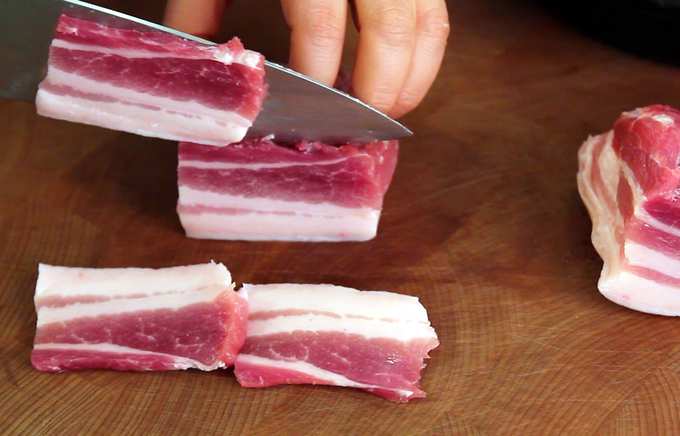
The SafePORK project can provide scientific evidence to policy makers and the public to support potential policy options for more effective food safety management. Picture: Pham Hieu.
Also according to Dr. Shirley Tarawali, Acting Director of ILRI, SafePORK project studies and interventions have made significant contributions to improving pork safety in Vietnam while supporting many livelihoods. Valuable lessons learned from this project will help create a safer food system for Vietnam.
Funded by the Australian Center for International Agricultural Research (ACIAR), the SafePORK project will run from 2017 to 2023 in Hanoi, Hung Yen, Nghe An, Thai Nguyen and Hoa Binh provinces. The International Livestock Research Institute (ILRI) jointly implemented the project in collaboration with the University of Public Health (HUPH), the Vietnam Academy of Agriculture (VNUA), the Institute of Livestock Production (NIAS) and the University of Sydney, Australia .
The project aims to reduce the burden of foodborne illness in informal, emerging and niche markets. Food safety is enhanced through simple, market-based approaches that contribute to improved pork hygiene for consumers while protecting the livelihoods of various players in the price chain.
DR Anna Okello, head of the Livestock Systems Research Program at the Australian Center for International Agricultural Research (ACIAR), said the agreement between ACIAR and the Department of Agriculture and Rural Development for the period 2017-2027 identifies food safety as one of the six became priority issues.
“Projects like SafePORK can provide scientific evidence to policy makers and the public to support viable policy options for more effective food safety management in Vietnam.” stressed Anna Okello.

